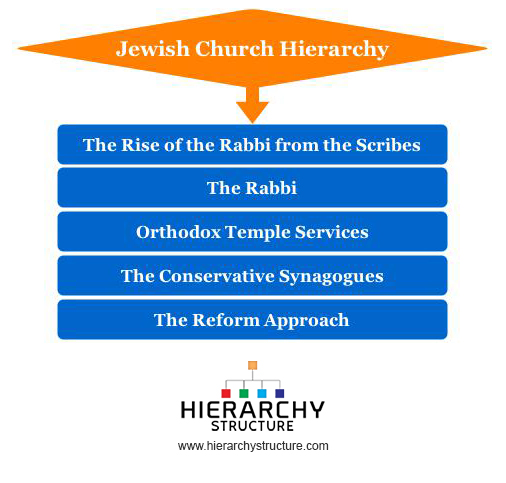In the time of Christ the religious life of the Jews was majorly controlled by the priesthood that comprised of the high priest and his family, members of the Supreme Council, the Sanhedrin, the local priest or the rabbi who also presides over the synagogue.
 The Rise of the Rabbi from the Scribes
The Rise of the Rabbi from the Scribes
The Scribes formed a small and exclusive group bestowing spiritual supremacy over people. They were the mouthpiece of the people who were pushed forward to lead from the front and are willing to listen to them eagerly. This gave rise to rabbis in the Christianity religious structure of the Jewish Church.
The Rabbi
He is the spiritual leader of the Jewish community and since he is also the spiritual leader is also the leader of ceremonies of his temple. But he is not indispensable in most congregations where there is no rabbi and the lay leaders lead the prayers and the rituals. But most of the synagogues still consider the rabbinical duties to be the key component irrespective of the recent concept of Jewish equality.
Orthodox Temple Services
In the orthodox synagogues the role of each member is defined clearly but is not hierarchical. Traditionally an orthodox congregation has a hazzan or a cantar who are assigned definite roles within the service. Most of them also have a shatz or a leader who represents the congregation on the pulpit. There is also a gabbai whose duty is to call people from the congregation and read from the Torah. Though not strictly hierarchical, an important point to note is that these positions cannot be fulfilled by women in any of these orthodox or ultra-orthodox congregations.
The Conservative Synagogues
Most of the conservative synagogues have a rabbi or a cantor and it is not common for them to have shatz or a gabbai. But unlike the Orthodox Judaism here a woman can fulfill the role of a rabbi. Structurally the hierarchy is avoided in Conservative social Judaism but it is mostly seen that a rabbi leads the congregation, followed by a cantor and then a lay.
The Reform Approach
The foundation of Reform Judaism is on a strong leadership partnership between the lay and the rabbi. The traditional structure includes a rabbi, a cantor and a lay but there is a definite hierarchy in the administrative set up.
The board of directors sits at the pinnacle, an employed rabbi occupies the second position and assistant rabbis or cantors after that last of all the general administrative staff. But the hierarchy exists only in the administration because the Jews believe all are equal in the worship service.
